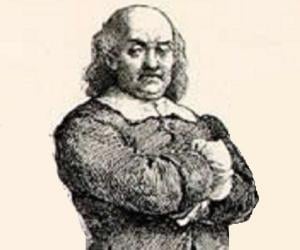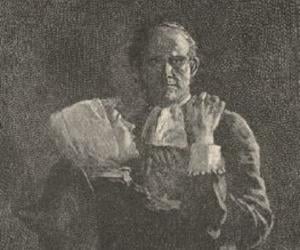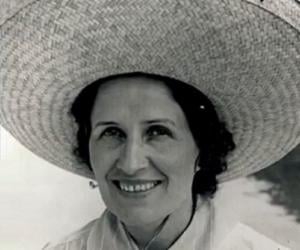Life in Salem
Initially Corey lived in Salem Town, but shifted to Salem Village in 1659 to work as a farmer. Court entries indicate that his behavior was not absolutely perfect as he had been fined for stealing grains and goods. Later in 1676, he was brought to trial in Essex County, Massachusetts, for severely beating one of his farmhands, Jacob Goodale, who later died due to the beating. Goodale was caught stealing apples from Corey’s brother-in-law, so Corey had beaten him with a stick. He was not charged with murder, but was fined for using ‘unreasonable’ force. The death of Jacob Goodale affected his reputation.
Corey became a prosperous land-owner of Salem Village. He had 4 children (Martha, Margaret, Deliverance and Elizabeth) from his first wife, Margaret, who died in 1664. On April 11, 1664, he married a London immigrant, Mary Bright. The couple had a son named John. His second wife died in 1684 at the age of 63. Then on April 27, 1690, Corey married Martha, the widow of Henry Rich. She had a son, Thomas, from her previous marriage.
The Salem Witch Trial
In the spring of 1692, some young girls of Salem started getting fits, convulsions, and strange experiences. They were diagnosed as victims of witchcraft. The afflicted girls named some village people or their spectres as the tormentors. It led to a witch hunt, which subsequently came to be known as the ‘Salem Witch Trial.’
Corey wanted to attend a ‘witch’ examination at Ingersoll’s tavern, but his wife, Martha, tried to stop him. He shared this with others and after a few days, some among the afflicted girls claimed to have seen Martha’s spectre. She was arrested on March 21. Amidst the hysteria, Corey initially believed the charges against his wife and testified against her, citing sudden illness of his ox and cat. He also spoke about her odd behavior like kneeling by the fireplace etc. (However, some reports state that he stood by his wife and endorsed her innocence).
On April 14, 1692, one of the afflicted girls, Mercy Lewis, named him and reported that he had appeared as a spectre and had asked her to sign the devil’s book. Thereafter, he was accused by Mary Walcott, Ann Putnam Jr. Elizabeth Hubbard. As a result of this, Corey was arrested on April 18, along with other accused, Mary Warren, Abigail Hobbs, and Bridget Bishop.
He was reportedly examined on April 19 at the Salem Village Meetinghouse. Judge John Hawthorne and Judge Jonathan Corwin blamed him of lying and tied his hands to stop him from carrying out any witchcraft in the courtroom. When one of his hands was untied, the girls began having convulsions. The Court asked him about his testimony against his wife, but he refused to say anything.
After this examination, Corey and his wife were left to languish in the jail till September 1692. Martha and Giles Corey were excommunicated from the village church on September 11 and September 18 respectively.
On September 9, Ann Putnam Jr., Abigail Williams and Mercy Lewis accused Corey of witchery, before the Court of Oyer and Terminer, stating that his ghost visited and tormented them. It was also stated that he was seen serving the witches at ‘witches’ Sacrament.’ Indicted on the charge of witchcraft, he remained silent and refused to enter any plea, guilty or not-guilty. Reportedly, he believed that the jury had already determined his guilt and there was no chance of acquittal.
Corey probably knew that as per the law, if he did not plead, he could not be tried. Then his property would be safely passed on to his inheritors. The local/state authorities had the right to confiscate the property of those who were convicted. However, if a person refused to plead, he was subjected to ‘Peine forte et dure’ (strong and hard punishment) or ‘pressing.’
Continue Reading Below
As Corey refused to enter plea, he was ‘pressed’ on September 17 (Actually, by that time the procedure was considered illegal). He was forced to lie down naked with a board placed on his body and heavy stones were put on the board. When he still refused to comply, the stone weight was increased. He was given minimal food and water. Still this could not force him to plead. Even after two days of this treatment, his only reply to their request to enter a plea was to add ‘More weight.’ At one point, when Corey’s tongue was pushed out due to pressing, the tormentor Sheriff George Corwin pushed it back in with his stick.
Giles Corey died on September 19, 1692, after two days of ‘pressing.’ Judge Jonathan Corwin ordered to bury him in an unmarked grave. His property was not seized as he had died without a trial. He had signed his will beforehand and had bequeathed the estate to his sons-in-law. His wife, Martha Corey, pleaded innocent, but was hanged on September 22.
The Massachusetts Legislature passed an act in 1711 and restored civil rights of Giles Corey and others. The Village church of Salem reversed the excommunication of Corey in 1712.
Some people condemned the gruesome way in which 81-year-old Corey was subjected to ‘pressing’ to force him to enter a plea. His death forced the locals to re-think about the witch trial.
Though Corey tried hardest to protect his property, Sheriff George Corwin attempted to extort money from the family and threatened to seize the estate if he was not paid. In 1710, Corey’s daughter and son-in-law filed a case to claim the compensations from the sheriff.
Facts About Giles Corey
Giles Corey was known for his strong determination and refusal to plead guilty or innocent during the Salem witch trials, despite facing intense pressure and torture.
He was an influential figure in the Salem community, serving as a successful farmer and landowner.
Corey was married three times and had several children, showcasing his commitment to family and relationships.
He was known for his resilience and stoicism, enduring the brutal process of being pressed to death without giving in to his tormentors.
Giles Corey's legacy lives on as a symbol of courage and defiance in the face of injustice and persecution.










